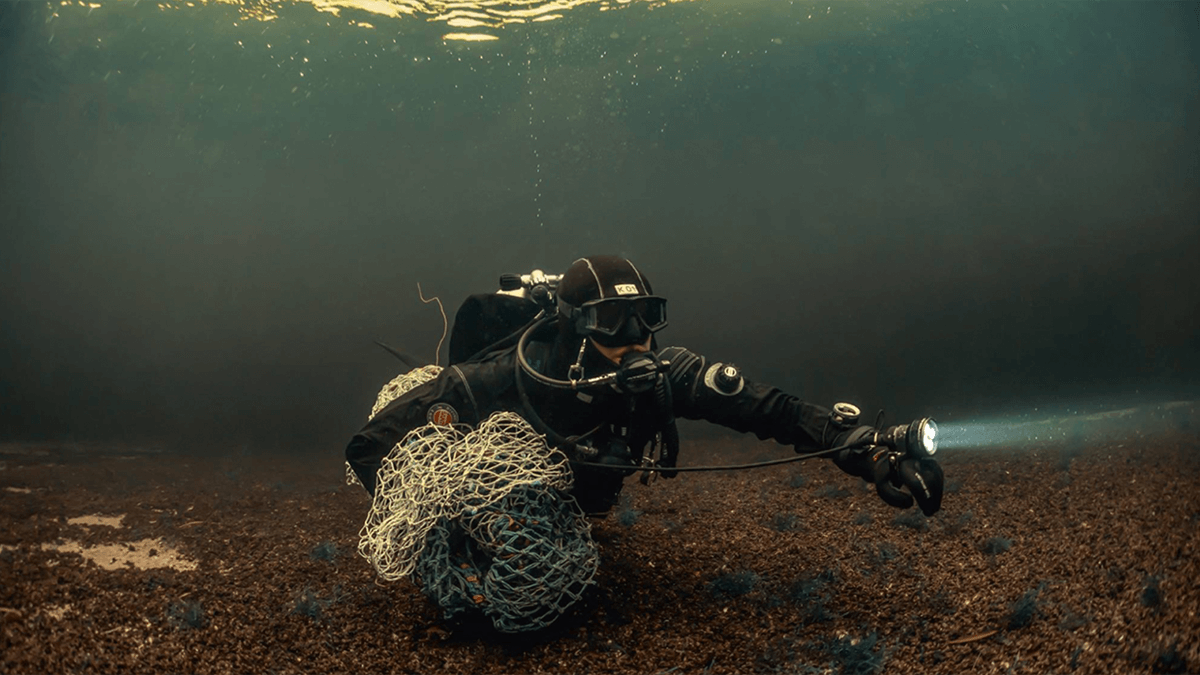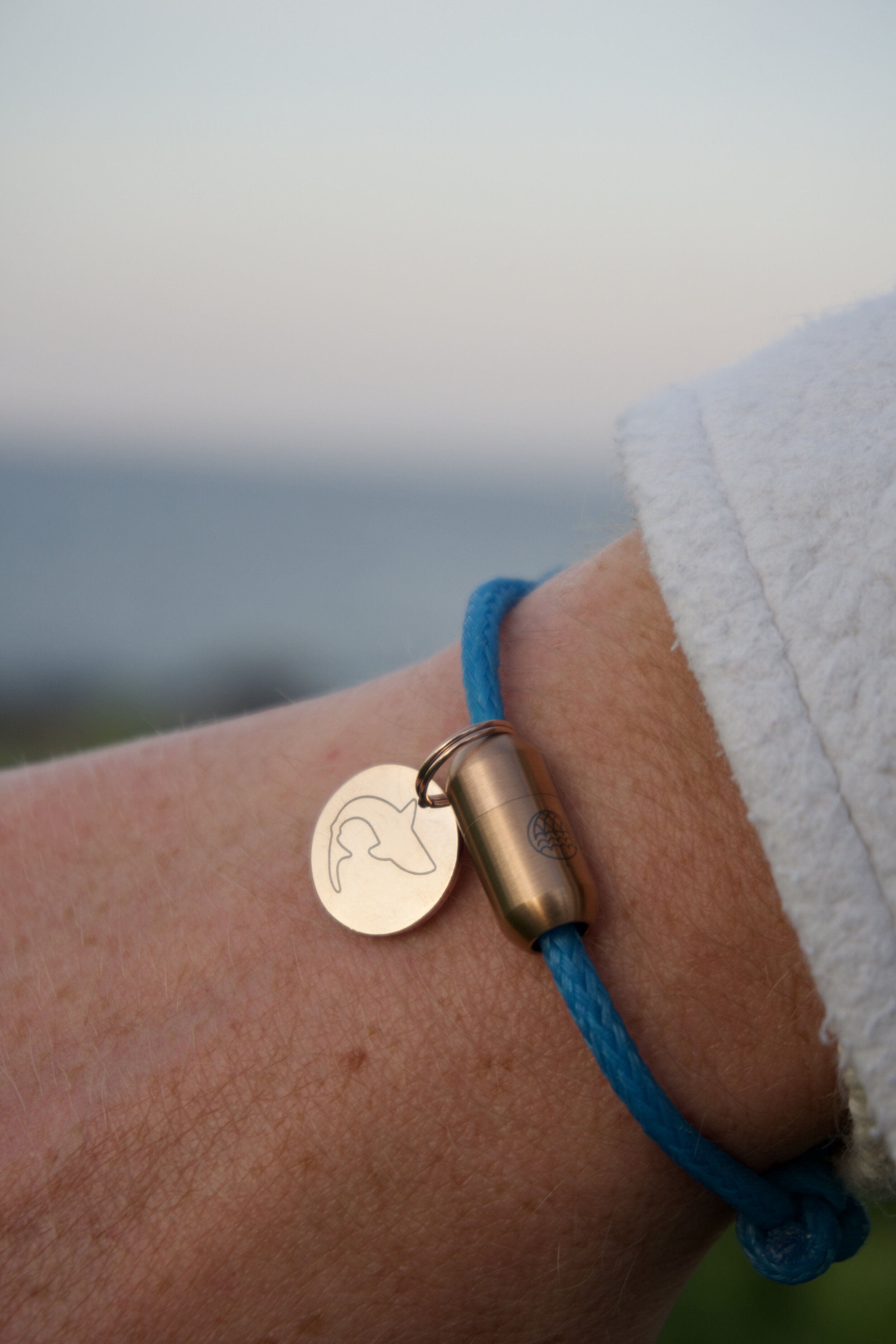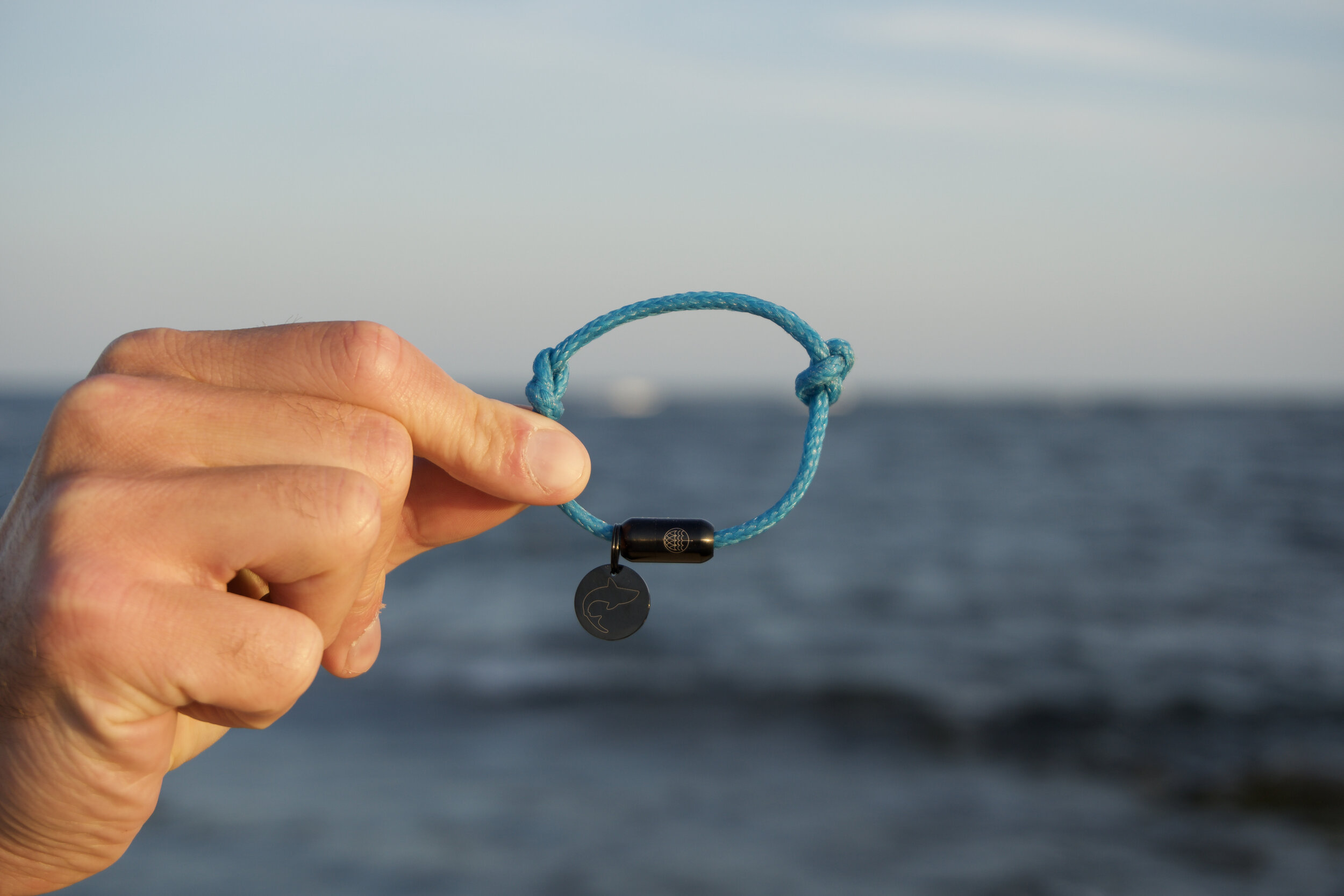Sustainable Spotlight: Bracenet (and the Story of Ghost Nets)
This guest post is written by Jacob Muth of Bracenet, a company that strives to spread awareness around ghost nets and the pollution of our oceans. After retrieving ghost nets from the sea, Bracenet creates unique accessories that serve as a statement, a confession and a conversation starter. The new, limited-edition Shark Bracelet II is now available in the Shark Cafe shop.
This is a story about ghost nets, an often overlooked threat to marine life. What are they, why are they so bad, and what can we do to fight them? You’ll learn about the nature and impact of ghost nets along the way. But there’s only one way to find out how the story ends – with your very own shark Bracenet. Now, let’s dive into it!
A Journey Through the Tides
Imagine a fishing boat pulling a trawl net through the water. The net is strong, but it develops some weak points over time. Then, it happens – the net gets caught in an old wreck and part of it tears off. The trawl net is later fixed with a patch, but let’s focus on the piece that got lost.
It’s drifting with the currents through the sea. Inevitably, at some point, a marine animal gets stuck in the net. That’s not a surprise, since fishing nets typically have a shade of grey, blue or green and are almost invisible underwater.
Now, a cycle begins. The fish that got stuck in the net soon attracts a bigger fish, which also gets stuck, and so on. Eventually, even sharks will fall prey to the haunt of ghost nets. All this time the net is continuing to drift around, but eventually it gets caught on the seabed and is slowly overgrown by algae.
But look! Help is coming!
A few divers from Ghost Diving and Healthy Seas are approaching. They cut the net to remove it from the ground, release any animals that are stuck, lift the net up on their boat, bring it ashore and eventually to Nofir in Lithuania. Nofir cleans these nets in large washing drums using only water to remove all salt, dirt and leftover algae.
While the net gave such a dangerous impression underwater, it now looks bright and colorful. It finally stopped fishing and is ready for a new life! Along with many other recovered nets, it’s brought to the Bracenet headquarters in Hamburg. There, we create new upcycled products, like keychains, dog leashes, rings and much more. Most importantly, we manufacture bracelets, like the shark Bracenet.
Now, there’s only one step left – will it decorate your wrist?
Common Questions about Ghost Nets
We hope you learned something from the story of ghost nets. If you still have questions, read on for answers to common questions we receive. To learn more, visit our website!
1. What are ghost nets and why do they pose a problem?
Ghost nets are old fishing nets that were lost at sea or deliberately thrown overboard. Even though they no longer serve a purpose, they keep fishing without end. It sounds scary, and it is indeed: they pose an immense danger to all marine animals. Every year, several million marine animals get caught in these dangerous nets. They are often unable to free themselves and die - and that’s not even the end of it. Ghost nets remain in our oceans for centuries to come, until they break down into microplastics in roughly 600 years.
2. How do ghost nets enter our oceans?
Ghost nets are old fishing nets, so their source is found within the fishing industry. For instance, they can get lost during a storm, in an accident, or when they get caught on corals, wrecks or other obstacles and tear off. Further, illegal fishing vessels may dump their fishing equipment when they are in danger of being caught. And lastly, sometimes nets are thrown overboard to make room for a particularly great catch, or they are dumped at sea to prevent costs for the proper disposal of discarded fishing nets.
3. How big is the problem?
While everyone has heard of ocean plastic, ghost nets don’t get as much attention – yet they are the largest contributor to marine waste. Take the Great Pacific Garbage Patch, a giant trash vortex located roughly between Hawaii and California. It’s said to be twice as big as Texas and it contains an estimated 80,000 tons of plastic, 46 % of which are ghost nets. To make it even worse, up to 1 million tons of old fishing nets enter our oceans every year.
4. What can we do about it?
The first step is prevention. We need incentives for fisheries to properly dispose of old nets, utilize GPS devices to find old nets, use materials that decompose more quickly, and fight illegal fishing. Bracenet is working on a lot of these solutions with our partners as part of an EU working group and with the Global Ghost Gear Initiative. Secondly, we need to remove the nets that are already in the oceans. That mission is our daily driver, together with our partners Healthy Seas, Ghost Diving and Nofir. We regularly donate to Healthy Seas to fund recovery missions as well as preventative measures and support many other projects to protect the oceans and marine wildlife, like Shark Allies. You can help too, by assessing your own fish consumption, talking about the issue and donating to projects dedicated to removing ghost nets.
And remember, every Bracenet on someone’s wrist means one less piece of ghost net haunting our oceans.







